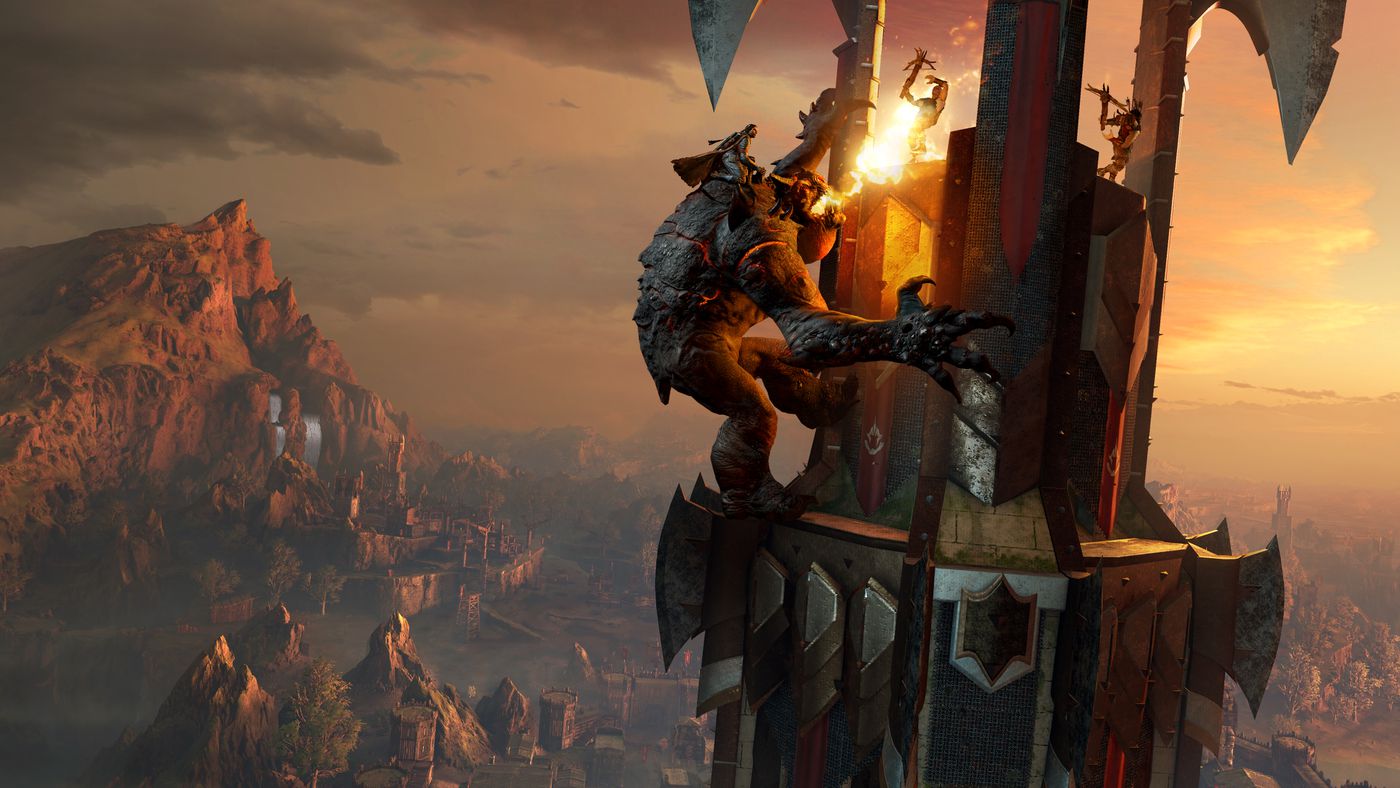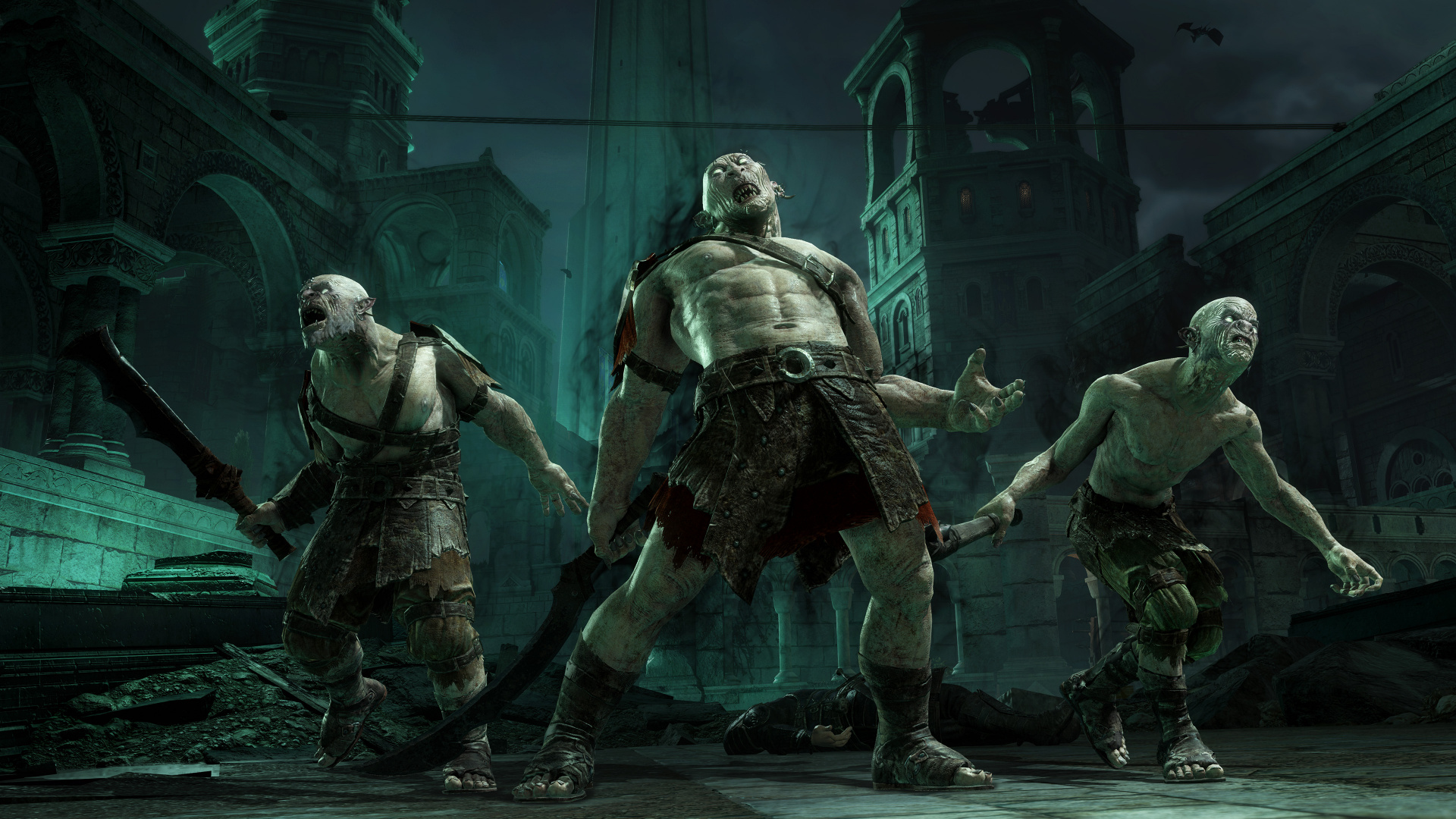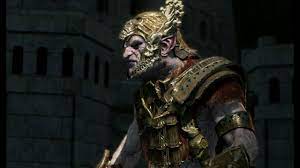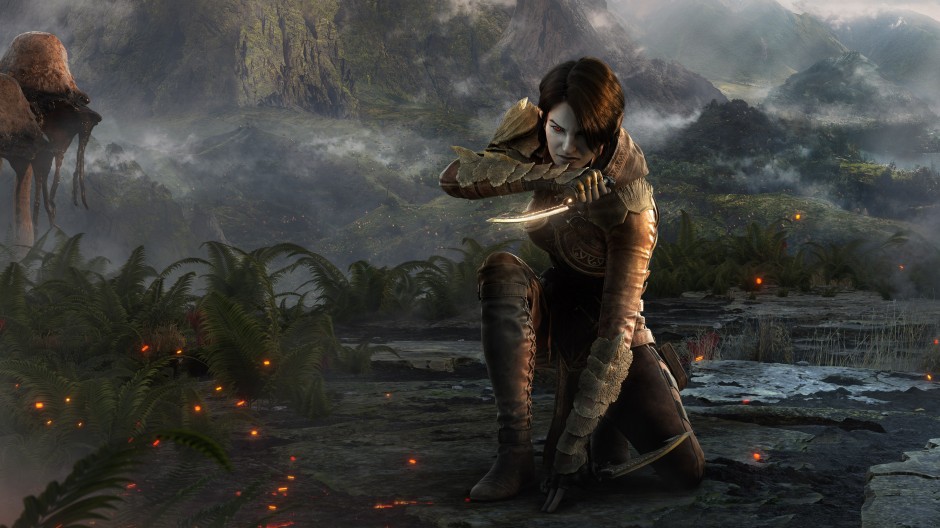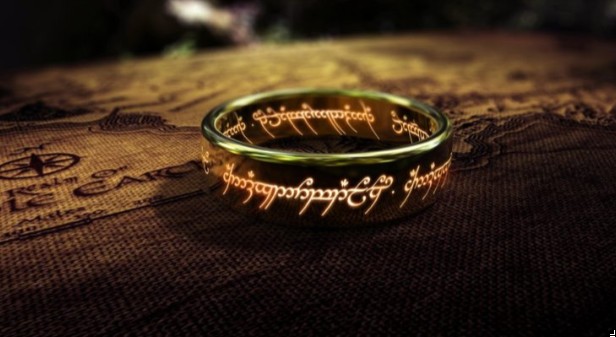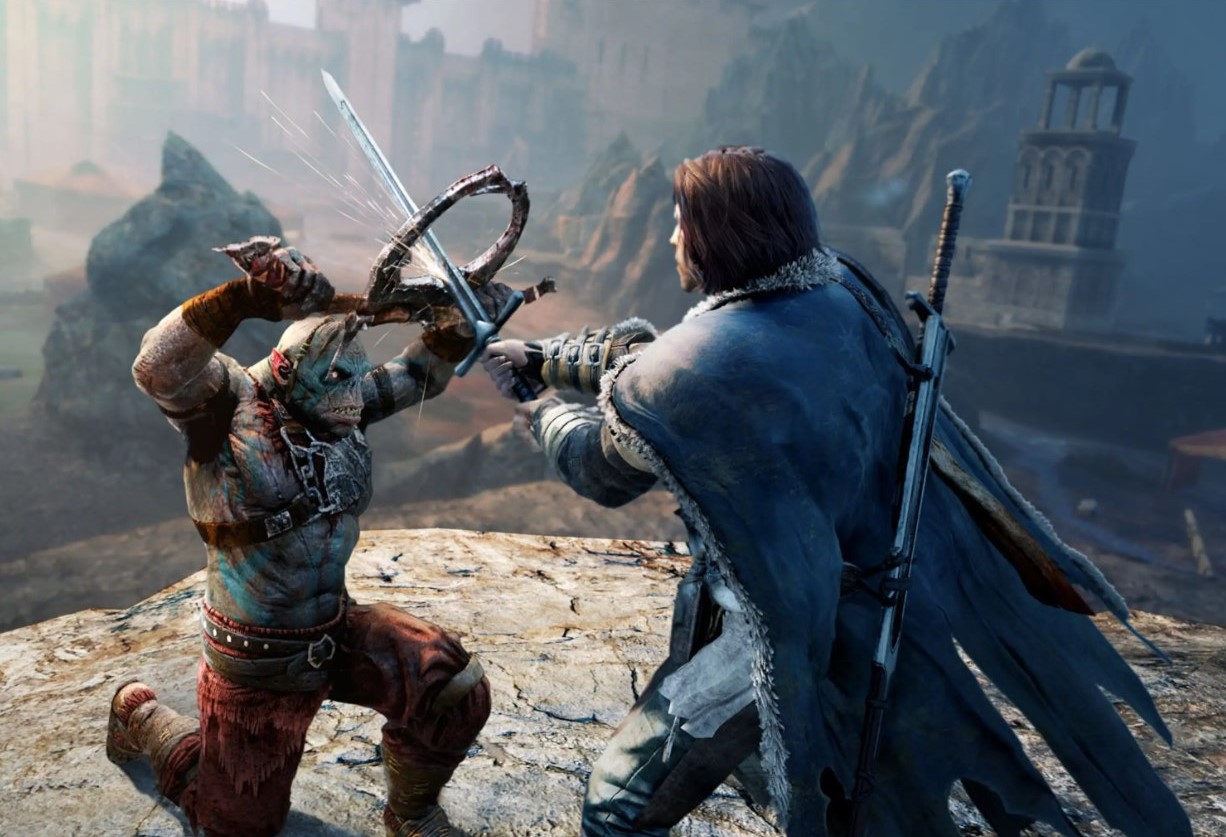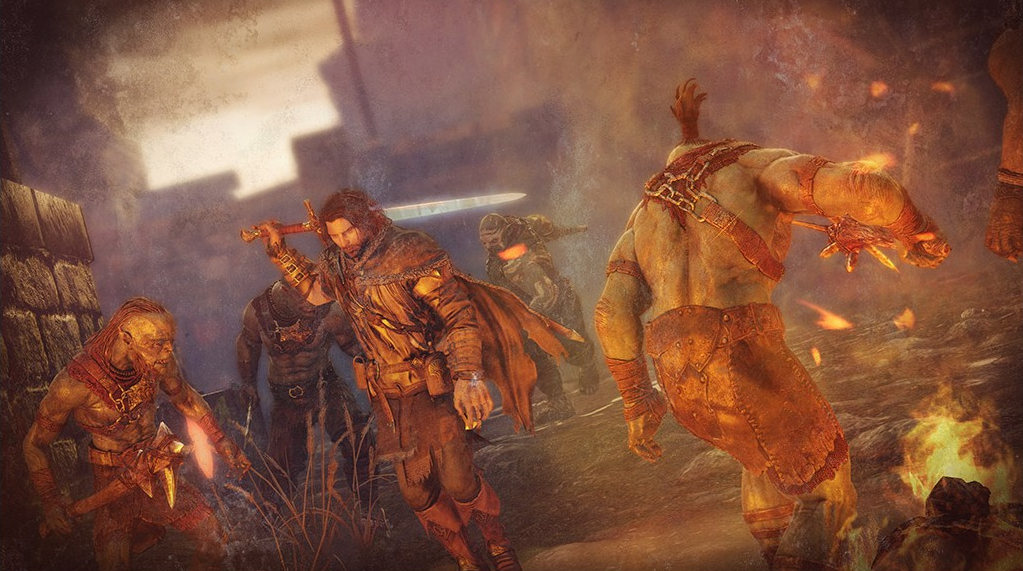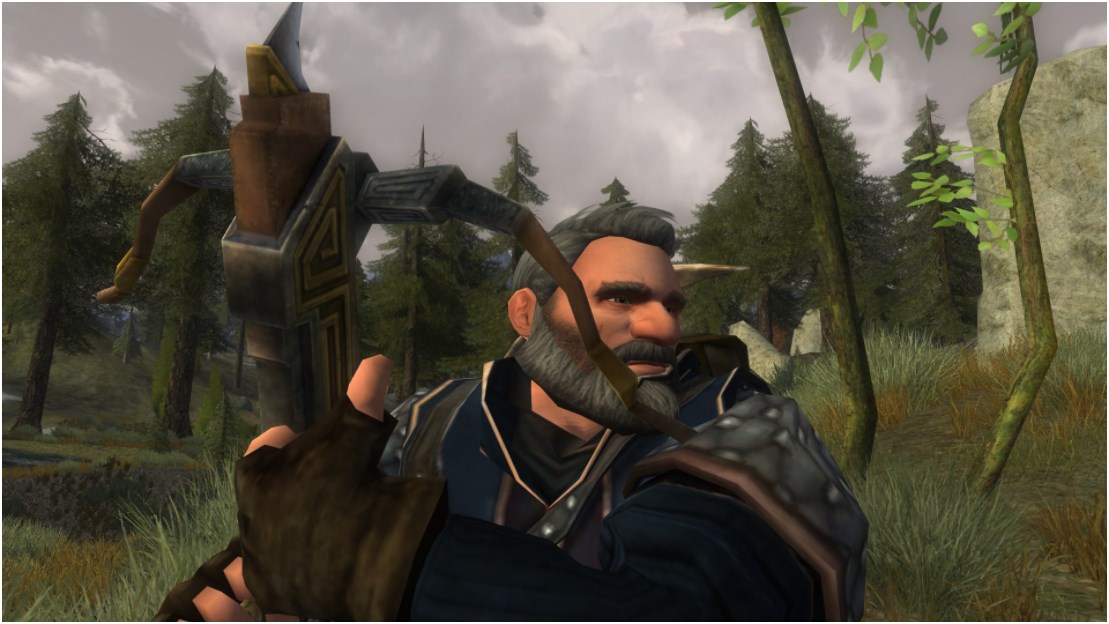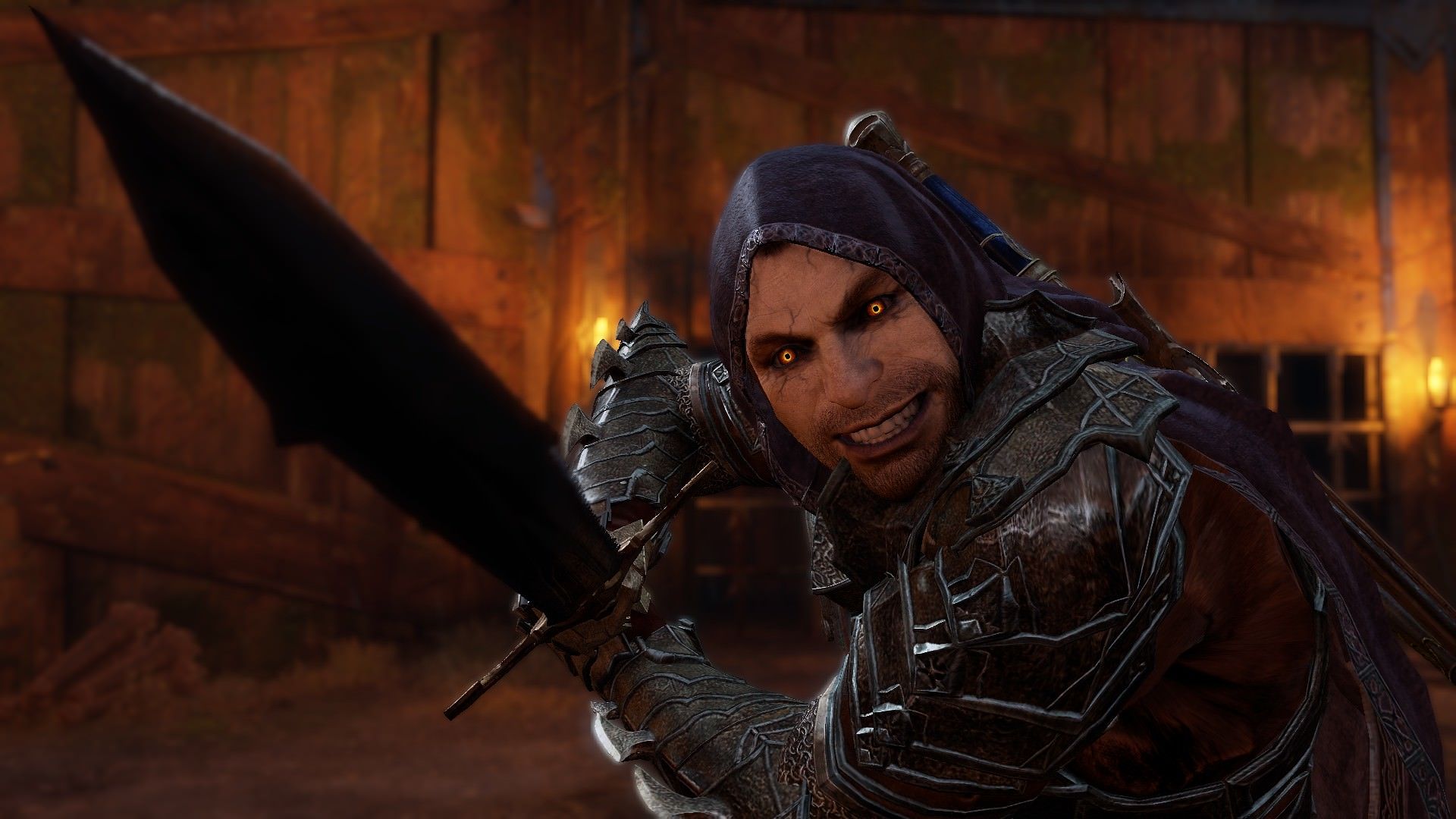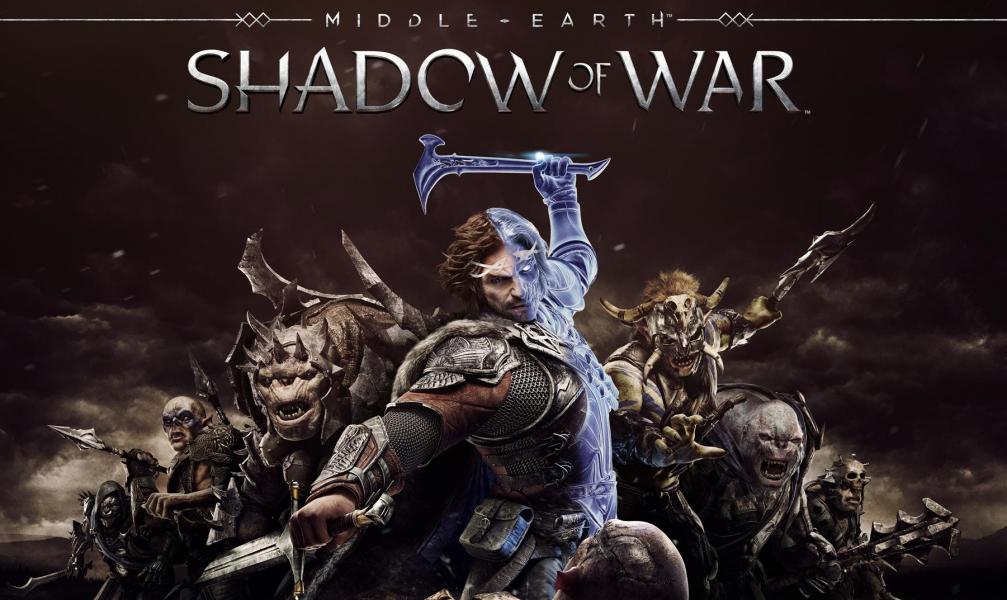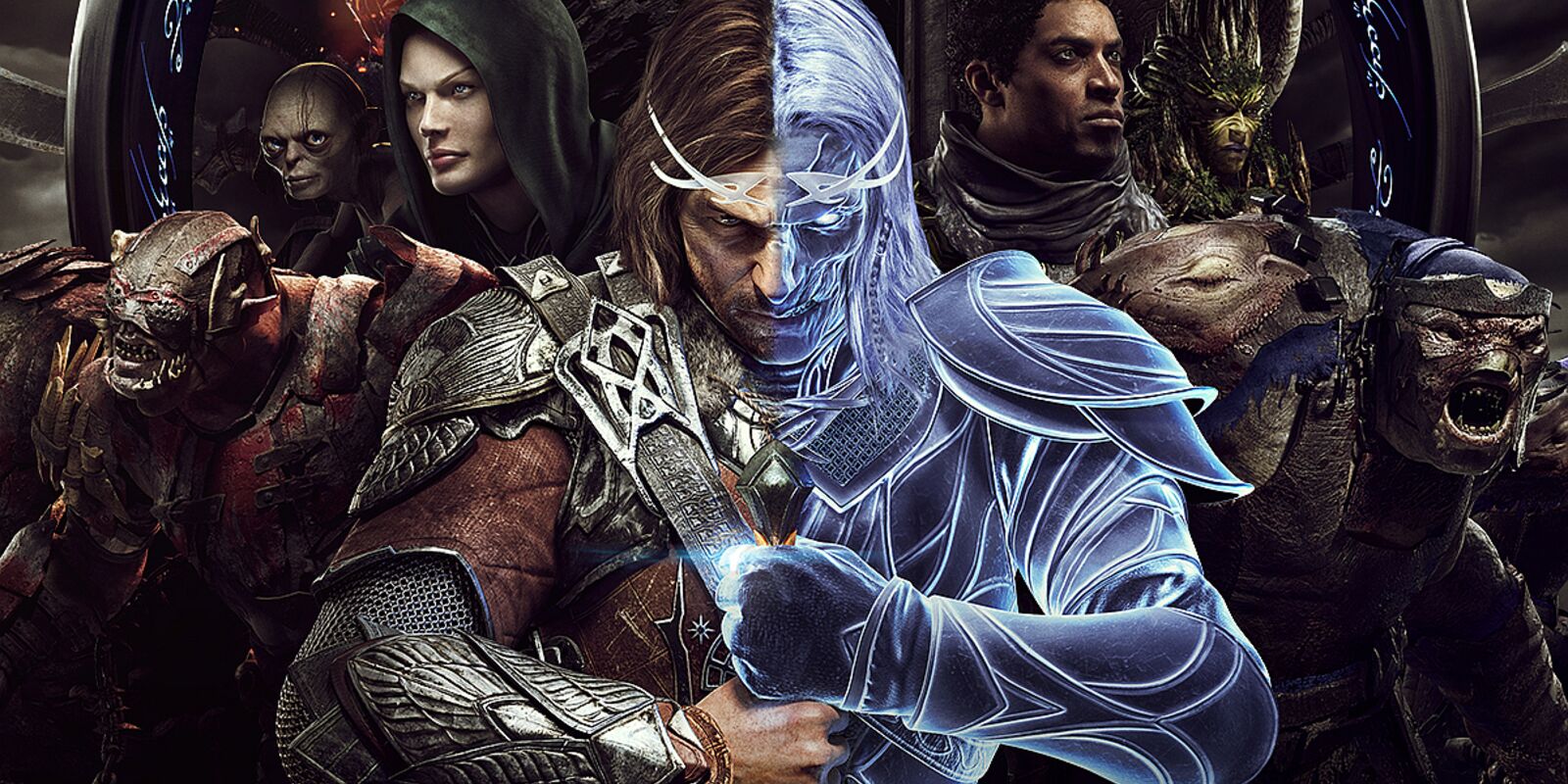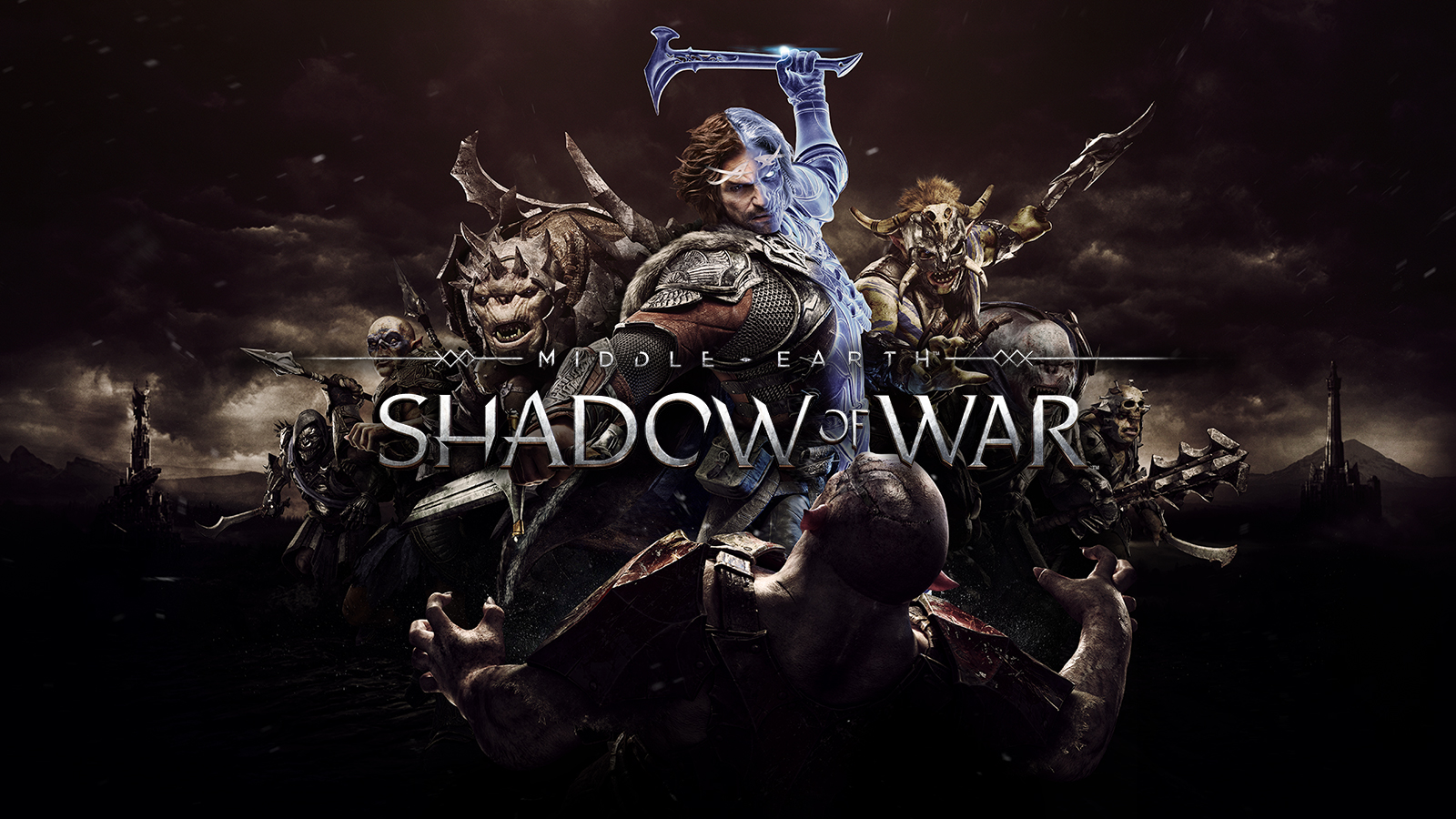
Many fans of J.R.R. Tolkien understand that there is more to Middle-Earth than what The Hobbit and The Lord of the Rings cover, and nearly that same many want to be able to dive further into the world and undergo more adventures. An avid reader could read through The Children of Húrin and The Silmarillion to learn more, and gamers can create a character in Lord of the Rings Online to keep the Middle-Earth experience alive. Yet for those who want to really feel like they are in Middle-Earth with their companions, or be directly involved with world events and write their own journeys, I have a game for you my friends: Adventures in Middle-Earth.
Adventures in Middle-Earth is a TTRPG published by Cubicle 7 in 2016, and they are still releasing content to add more adventures for players to experience (a new book is actually releasing in November of this year). This is an in-depth review of the game and many of its aspects, to give you a full understanding of what it’s all about before determining whether to purchase and play. Spoiler alert though, I highly recommend you do. As someone who has been playing this game extensively for the past year, I will be sharing some of my own experiences as examples of what other players can come across, but will also remain honest and list some points that other players may not enjoy if they are accustomed to playing other games of this type.
Before we begin, I would like to make note that there are times in this article I relate this tabletop game with Dungeons & Dragons, especially when discussing the gameplay. I do this to help current TTRPG players understand how they can easily adapt to this game’s playstyle with knowledge they already know, and therefore would not need to learn an array of new mechanics. With that said, it is with a positive light that I make the comparison. In my personal experience, it is Adventures in Middle-Earth that introduced me to the industry of TTRPG, and once I got a good grasp of how to play, I moved further into playing Dungeons & Dragons and now play both games simultaneously to this day.
Anywho, and without further ado, let us embark on everything that is Adventures in Middle-Earth.

The rolling hills of Middle-Earth
Story
It is the year of 2946 of the Third Age, where the story starts a few years after the downfall of Smaug the Dragon, and Southern Mirkwood being relieved of Sauron the Necromancer’s presence by the White Council. Thus, The Adventures in Middle-Earth takes place between Tolkien’s The Hobbit and The Lord of the Rings. A time of peace is brought to Middle-Earth that boasts of freedom. With many threats gone, trade routes can reopen, adventurers can set out on valiant endeavors and return as heroes, and throughout the land is civilization free to prosper.
At least, so it may seem.
Hints of shadow still reside throughout parts of Middle-Earth that were touched by creatures of lore: The Witch King of Angmar, Sauron, and many more. The player-heroes will unfold history and secrets throughout the land, and soon realize that the threats of the past were only the beginning. The Free Peoples will be in danger once more over the years, and it is up to the players to find that out and fight against the enemy.
Will they succeed? Only time will tell.

Adventure Awaits!
Gameplay
Anyone who has played Dungeons & Dragons 5e can easily jump into this game since the rules are almost exactly the same. The game requires one loremaster (a.k.a. dungeon master) and players to role-play as heroes in the story. Character sheets are created for each player’s hero to keep a record of the hero’s statistics, personality, inventory, and attacks. As the role-play progresses, players will roll dice and pair those numbers with the statistics on their character sheets in order to determine the resolution of an action taken, or the outcome of a situation. This is a very basic summary of how one plays a TTRPG such as this. Buckle up, because we have plenty more to go through!
There are enough differences between the two games however that you want to make sure you read through before jumping in your first session. These differences involve spellcasting, shadow points, and the most important part of this game, the Adventuring Phase. The spellcasting portion will be discussed further in the article, but below I will go through the basics of the gameplay that include similar races and classes as 5e, as well as the new concepts just mentioned.
Races (Cultures)
Races are known as Cultures in Adventures in Middle-Earth, and each provide their own strengths and weaknesses for journeying. This would be the first decision the players make when creating their characters. The core cultures are:
- Bardings
- Beornings
- Dúnedain
- Dwarves of the Lonely Mountain
- Elves of Mirkwood
- Hobbits of the Shire
- Men of Bree
- Men of the Lake
- Men of Minas Tirith
- Riders of Rohan
- Woodmen of the Wilderland
Other races have been added over time, such as the High Elves of Rivendell, but they would be at the loremaster’s discretion of whether you can play as that culture or not; just like how you would have to ask your dungeon master to play a rare class in Dungeons & Dragons (at least, you should be doing that. That’s the nice thing to do).
Classes
After a culture is chosen by the player, next comes the class. Classes are what determines how the hero fights, what they specialize in, and therefore what roles they most likely will play in the adventuring party. The classes are listed below, and when necessary, in parentheses are what the class would be known as in Dungeons & Dragons. The good news, with Adventures in Middle-Earth and Dungeons & Dragons both using 5e rules, is that you can easily have your character from either game transfer to the other if you want to.
- Scholar
- Slayer (Barbarian)
- Treasure Hunter (Rogue)
- Wanderer
- Warden (Bard)
- Warrior (Fighter)
Virtues (Feats)
Virtues are additional talents and skills that heroes can learn throughout their adventuring to become stronger. There are both virtues that are available depending on what culture the hero is, and virtues that are available regardless of the hero’s culture. You pick one upon creating your character with a culture and class, and you have the option to pick more as the game progresses.
An example of a virtue is the King’s Guard, where a Rider of Rohan can choose a specific type of weapon and do more damage with it while mounted in combat.
Backgrounds
Each background provides a character additional skills, a special ability, and a list of personality traits that you can choose from to flesh out the character. These come heavily into play and become the character’s personal backstory and mission to complete while out adventuring.
An example background is the Harrowed: someone who is plagued by a consistent dream that can be a sign of good or ill-intent. Therefore, the person is left to search and discover what the dream is about, and can gain some foreknowledge on the matter while meeting various people and visiting different locations. This person can be very secretive of the dream in fear of what could happen when others find out about it, hopeful and determined to decipher it, or in utter despair that they will never figure it out.
Equipment
What kind of hero would the character be without any weapons or equipment? Those are most certainly needed if one wants to survive the journey! Heroes will experience the use of currency as well as purchasing and selling equipment. This is the standard for any RPG. Adventures in Middle-Earth also provides different standards of living that are specific to the culture that the character is from. For example, the Woodmen of the Wilderland are a frugal type, while the Dwarves of the Lonely Mountain enjoy a wealthy lifestyle.
Adventuring & Fellowship Phase
Finally at the parts that make Adventures in Middle-Earth unique! A lot of people will skip the actual travel from one place to another in these types of games, but not this one. Adventures in Middle-Earth focuses on the exploration of the lands far and wide, and have and extra set of rules to determine just how well the journey goes.
The character who is the guide in the party will roll a die called the embarkation roll. Based on how low or high the number rolled is (with some other statistics in play), the journey can be rated as good or bad, and a certain number of events can occur. This can range from an ambush of goblins to a bright shiny day that lifts spirits.
The journeys are all about the storytelling of the loremaster and no path is ever travelled the same way twice. I personally have had a short trip between Mountain Hall and Rhosgobel both go really well, and also nearly kill my character. The Adventuring phase with the embarkation roll is truly an added dynamic to the role-playing.
When the hero party is not adventuring, they can go through something called a Fellowship Phase. This is where players get the chance to accomplish a number of items that they can’t while out and about. Such items include more training, researching lore (perhaps on their personal missions), receiving a title, and even healing corruption they received while journeying. What about healing corruption you ask? Well that brings me to the next unique part of this game.
Shadow Points
As mentioned earlier, there are hints of the Shadow that still roam Middle-Earth; and coming across these can negatively affect the heroes to the point where they are miserable or go mad. These negative effects are measured as shadow points. Shadow points are gained when the hero experiences the following:
- Distressing events
- Travelling through an area tainted by the Shadow
- Committing misdeeds or crimes, regardless of why they did it
- Taking possession of a cursed item
When a hero possesses a certain amount of shadow points, they can experience a bout of madness that relates to the shadow weakness from their class. Remember when Boromir in The Fellowship of the Ring tried to take the ring from Frodo? That would be an example of a bout of madness that can happen. Boromir suffered a lure of power, and for classes like the wardens and warriors in this game, the same exists for them. This can easily add drama to any adventuring party, and trust me, it will.
Now, the most important thing to note about these shadow points is how they affect characters’ ideologies and beliefs (or alignment in Dungeons & Dragons). The essence of how this game is played is that all heroes are brimming with goodness and act as the savior of all, a.k.a. lawful good alignment. If the character performs less than that, the risk of obtaining shadow points are higher. This is a warning, then, to players who enjoy playing the chaotic and evil type characters in other RPGs: This game does not provide the option of choosing an alignment. You either playing a do-gooder character, or your character quickly gains enough shadow points to go permanently mad, succumb to the Shadow, and die.

Tread Carefully
Component Quality
Time to discuss the spellcasting and components concept of this game. For starters, spellcasting is practically nonexistent in Middle-Earth aside from the great wizards like Gandalf. So classes such as wizards and warlocks are not an option like they are in other games. With that said though, one can argue that the gameplay is somewhat simpler for players with the lack of spellcasting. Players can focus more on the role-playing and regular combat aspect, without needing to understand the additional set of rules of spell slots, and which spell does what.
Before you spellcasters get all huffy however, there is a chapter in the Loremaster’s Guide that discusses adding magic at the loremaster’s discretion. The only rule is that the magic has to make sense for Tolkien’s universe. Magic in Middle-Earth is “of strange supernatural gifts and permissions,” not a field of study. Dwarves are able to use runes to hide things, while Elves can speak with stones and trees; but those skills cannot be shared with other races, and heroes will never find a scroll or tome where they can learn magic.
With that said, the guide provides different tiers of magic that you can add to Middle-Earth, such as the default magic tier that the game initially uses (with only wizards performing such miracles), and an open concept that can include spells like fireball for anybody. A list of appropriate spells for Middle-Earth is also included in the guide to work off of. This is one thing that makes Adventures in Middle-Earth very adapting toward any kind of players. New players can disregard magic as mentioned and focus on other mechanics of the game, while advanced players can dive right in to what magic and other secrets Middle-Earth has to offer.
So if spellcasting isn’t exactly a thing for players to experience initially, how do heroes heal and get healed? After all, there is a healer class (Scholar) in this game. While hit dice can be used still during short rests, and Scholars do have what are called healing dice (similar to bardic inspiration dice in Dungeons & Dragons), the primary answer is herbs. And this is where we finally get to talking about components in this section.
To put it briefly, scholars start with an herbalism kit and can gather herbs while adventuring to make medicinal remedies with varying effects. Some herbs heal, some increase stealth, and some can lessen the risk of getting poisoned or receive shadow points. Some herbs are more common than others and grow in different parts of Middle-Earth. There are also some areas that have nothing growing at all, especially if the heroes are travelling where the Shadow resides. This by itself helps give a completely different feel of survivability to the game; which I will now get into.

Dwarves of Middle-Earth
Theme
Heroes journeying in a world that finally is at peace. Or so it seems. As the players explore Middle-Earth and gallantly assist with any request for aid, they learn that the Shadow is still a threat, and there’s a possibility it’s growing stronger. The purpose of Adventures in Middle-Earth is to explore the land and learn its secrets of the Shadow. Therefore, this game is all about adventure, mystery, discovery, and survival. Sounds just like Tolkien’s work, doesn’t it?
The history and lore of Middle-Earth is so vast that there is much to learn when heroes investigate areas like ruins. I think even long-term fans of the books will learn a lot too, though you might recognize some if you’ve read The Children of Húrin and The Silmarillion. Following parts of history can lead to the discovery of items like the Iron Crown of Angmar, or potentially other relics of the Númenóreans.
Yet this kind of exploration and research can be dangerous, and that’s where the survival bit comes in. After all, Mirkwood is still one of the most dangerous places to travel through if you don’t stay on the path! Because of certain aspects of the game, such as the limited use of magic in the world and using herbs as medicine, surviving is more of a traditional scenario, where you depend on the resources at hand or around you.
Other resources in your inventory are also of greater importance in this game, like rations. I don’t know about you, but I constantly buy rations in this game as opposed to Dungeons & Dragons. There is such a thing as starving if you don’t have the resources and are unable to hunt for game. This all helps the game be more realistic, just as if you are travelling through Middle-Earth yourself. Like role-playing should be!

Elves of Middle-Earth
Replay-ability
Adventures in Middle-Earth is filled with stories and opportunities just like other TTRPGs. It is a game where you cannot have the same kind of adventure twice, and can therefore keep playing for years to come. While the story overall has a specific year set at the beginning, the world itself is practically a sandbox that you can either create your own stories in, or use the guidelines in any of the adventure and region guides to follow a more concrete story.
With this amount of diversity, the game is also for loremasters of all levels, just as it is for players new and veteran. With the help of the region guides and adventure guides that pair with the game, the world is entirely yours to make as your own.

Journey far and wide
Rulebook
Speaking of guides and rulebooks, there are many that encompass the world of Middle-Earth for this game. All books follow 5e rules, with very slight differences that have been noticed throughout my time playing. Ruling on these differences, at least with how my group runs the game, is up to the loremaster’s discretion. For example, we continue to play with the rules of flanking to gain advantage on attacks, but nothing like that is mentioned for Adventures in Middle-Earth.
Adventures in Middle-Earth consists of your typical Player’s Guide and Loremaster’s Guide. These are the two core books necessary to run the game at a bare minimum. If you are a player, you would only need the Player’s Guide. As a loremaster however, you will need both books in order to have the resources necessary for any kind of adventure.
Region guides are also available for additional details, monsters, and notable NPCs to add to the journey, depending on where the heroes are adventuring. Going west of the Misty Mountains to meet Lord Elrond of Rivendell, or travel north to Carn Dûm in Angmar, would require the Rivendell Region Guide. However, if the heroes want to visit the recently freed-of-Smaug Dale and Lonely Mountain, there is the Lonely Mountain Region Guide.
The region guides do not however contain any campaigns or pre-built adventures that a loremaster can work with if need be. Those would be the Mirkwood Campaign and the other adventure books. These books provide journeys of various lengths that the loremaster can use either by themselves, or as integrations of one big journey. For example, there is a one shot, called the Eaves of Mirkwood, that only lasts a few days in Middle-Earth to act as an introduction to the game. There is also the Mirkwood Campaign that lasts 30 years in Middle-Earth; probably the longest campaign length I’ve ever seen!
I will stress again the adaptability of this game. I personally have experienced a premade campaign from start to finish, the added drama and flair from the loremaster to tie in different parts of a campaign with his own storytelling, and even a good old sandbox exploration before the heroes in my party discovered a plot.
Here is a brief summary of how my group’s campaign started, expanded, and progressed into something creative: When the group was made of three players that were completely new to TTRPG, and one veteran loremaster, the story was a premade campaign for the first few levels. As the players got more experienced with how to play the game, the campaign became more complex by fully tying in a specific hero’s background with the happenings of the Folk-Moot in Rhosgobel (part of a different campaign book entirely). The Folk-Moot however was also a significant event with introducing a notable NPC for a new plot to come, but only time would tell if he was friend or foe. Thus the party left Rhosgobel to tend to other matters. They were left to discover and research another hero’s backstory, which made the world a total sandbox of exploration.
I can go much further into the amazing adventure that was the Woodman, Elf, and Dúnedain, but I think I made the point. And sorry, no fancy party name like Vox Machina or the Mighty Nein.

The city of Dale
Artwork
I am a sucker for artwork. I am definitely one of those people who will open a game manual and look at the art. I’m not the only one, right?
There are pages and pages of artwork throughout all of the books, and in my opinion, they paint a beautiful picture of Middle-Earth that still keeps the original tone that Tolkien used to describe his universe. There are grassy hills under a blue sky, mountains that pierce the clouds, dwarven caverns cut sharp with architecture and gold, and darkness that lingers in ruins and the deepest parts of forests. These all add to the unique feel that Adventures in Middle-Earth has when compared to others. It is definitely your good ol’ medieval-fantasy adventure in a world that’s beautiful, but wrought with secrets and shadow.
All of the images that are included in this article are from the Player’s Guide. Be sure to enjoy the artwork as you continue reading.

An unexpected journey
Originality
Reading up to this point, you can already tell that Adventures in Middle-Earth truly brings its own originality when being compared to other iconic games. This includes the shadow point system, the Adventuring and Fellowship Phase, the spellcasting limitations and higher significance of components and resources.
Let’s not forget also that the setting of Middle-Earth brings new types of creatures and monsters. The great eagles, for one, can make an appearance under specific circumstances. There are also the Nazgûl and some troll leaders that can be a nasty encounter, like Bloodstump the Hunter. He can spend a bonus action to critically hit automatically. As if he didn’t hit like a truck already for being a giant hill-troll.
One final thing to note for originality of Adventures in Middle-Earth is that the Mirkwood Campaign is a 30 year long journey for the heroes involved. While the pace of the campaign is up to the loremaster, it’s my opinion that other games would not have something like this due to the major focus on adventuring like this game has.

Creatures and shadows abound
Downtime (What do you do during others’ turns)
Like other TTRPGs, the situation doesn’t become turn based until coming across an encounter. There isn’t anything required to do while you wait for someone to make an attack on a monster, or run over to heal an ally, but it is highly recommended that you use the downtime to determine what to do when your turn comes next.
The main reason for this is so the pace of the battle runs quickly and the tension of it remains high. If someone starts to take too long to decide on how to take their turn, it will ruin the fast pace and pressure that is supposed to exist, and therefore doesn’t accurately portray the battle in real time. The rule of thumb is that a round of combat is six seconds long, consisting of both the heroes’ and monsters’ turns. Therefore, it is very unrealistic to spend your turn plotting the most strategic plan to begin with.

A world full of lore and history
Ease of Setup & Pack Up / Storage Tray Quality
Once more like other TTRPGs, there are many ways to prepare for a session with Adventures in Middle-Earth. The minimum requirements for the game are the books, a set of role-playing game dice for each player, and character sheets. All other materials, such as physical maps and miniatures, are completely up to the group playing the game. Some players and loremasters can go all out on those materials and other tools to bring the story to life on the table, while others are perfectly fine with the loremaster elaborately painting a picture with their words.
However, if you are someone who would prefer to play online with friends, or your group has no means of physically meeting together for a session, there are online tools to use to play. Roll20 is one of them; a website that supports playing TTRPGs online and provides access to the type of character sheets that Adventures in Middle-Earth uses.
Based on how you play the game determines the resources needed, and storing them can range from a simple backpack to an entire plastic tub. Miniatures and cases for them can be bought both online or at your local comic book store, along with maps.

Where the shadows lie
Value / Bang for Buck
Like other TTRPGs, buying the books to play the game can stack up in the blink of an eye. The good news at least is that you receive the PDF equivalent of the book for free when ordering a physical copy on Cubicle 7’s website. I find this well worth the price for each book, especially if the loremaster is introducing new players to the game, and can share the PDF to them without multiple player guides needing to be bought at first. Then, as the players remain committed to the game and decide to continue playing, they can purchase their own physical copy of the guide to have on hand.
This is what happened when my group decided to try playing Adventures in Middle-Earth. The loremaster was ecstatic to start playing and purchased the Loremaster’s Guide, a Player’s Guide, and one of the adventure books, and then shared a PDF of the Player’s Guide with his three brand new players. Within the first year of playing, each player got their own copy of the guide to reference on their own.
Currently, all books are priced as $39.99 on Cubicle 7’s website. In total, there is the Loremaster’s Guide, the Player’s Guide, four adventure books (including the Mirkwood Campaign), and five region guides. Other items on their website are the Loremaster’s Screen bundled with the oneshot Eaves of Mirkwood at $29.99, and The Road Goes Ever On, a 32 page supplement and maps, also at $29.99.
Again, I find these well worth the price for also getting a PDF of each book, and considering that other tabletop role-playing book can rack up to $50.

In the Wilderland
Overall Fun Factor
Okay friends, we covered a lot of details in this review. But this game certainly had a lot to discuss!
As a quick recap, the general gameplay is similar to Dungeons & Dragons 5e and follows the same rules, with differences in races, classes, and other concepts that add originality to the game (Adventuring and Fellowship Phase). Backgrounds of the heroes are also very unique and immersive in the campaign, and they, along with the shadow point system and shadow weaknesses, can add some very dramatic situations for the party.
Other things that were mentioned can be potential caveats to some current TTRPG players: the lack of variety in ideologies and beliefs for heroes, as any dishonorable action or misdeed will rack up shadow points, and the lack of spellcasting in this fantasy world. I honestly don’t mind the spellcasting bit, as the game certainly adds methods of adding spellcasting if you want to. It is also what makes this universe unique and more true to what Tolkien created. And that I appreciate. If my group and loremaster decide to add more accessibility to magic, cool. Yet during our current campaign, we love the traditional survivability that the game is all about.
As for ideologies and beliefs, this can be tougher to get accustomed to, or have the game not feel as diverse in character creation. As mentioned, your hero must be the A+ student in the class of happily helping people in the name of justice. If your hero will threaten people or attempt to steal anything, a shadow point will likely be gained. Even if your hero does a misdeed in order to help the greater good, shadow point. This has been tricky for a player in my group whose character was a prideful Dunedain that enjoyed intimidating and threatening all with his power of the sword, even innocents if he didn’t get what he wanted from them. While the character played at his shadow weakness extremely well (albeit unintentionally), the player himself was getting annoyed after a time of all the shadow points the loremaster was giving him.
One final thing that I will bring up as a caveat before wrapping this up is something that’s not included in the Player’s Guide: Instructions on how to actually create your hero. As an example, in the Dungeons & Dragons 5e Player’s Handbook, the beginning shows steps of how to create a character with extensive details such as how to roll for ability scores, and ultimately how to complete a character sheet for your first session with the new character. This is not the case with the Player’s Guide for Adventures of Middle-Earth, and I believe it would be helpful if there was.
As someone who was brand new to TTRPGs and this being my first game to play, I was at a total loss on how to make my first character. Luckily, I had the help of a very nice loremaster and the internet to help; and over time, I got fully immersed in TTRPGs and bought a Dungeons and Dragons 5e Player’s Handbook that provided the information of crafting characters that was originally missing. So if there is one recommendation I would give for this game, it’s the steps on how to make a new character and fill out a character sheet.
But all in all, Adventures in Middle-Earth is the game for those Tolkien fans that want to be more immersed in Middle-Earth and have their own character walking through the iconic hills of the Shire, or through the valley of Rivendell. As I mentioned at the beginning of this article, I highly recommend this game and see myself continue to play it for years to come.

A fellowship of the ages
Final Verdict: 8/10
As you can see, there is so much more to Middle-Earth than The Hobbit and The Lord of the Rings that can be discovered and played through, and Adventures of Middle-Earth is a wonderful TTRPG that explores further into that world. So go on my fellow fans of Tolkien! Pack your bags and venture forth on the roads of Middle-Earth that lead to legends of old, and create your own legend to be told for the rest of time. “The Road goes ever on and on, as they say!”
You may also be interested in:
Middle-Earth: Shadow of Mordor
The Lord of the Rings TV Series: Nine Things You Should Know About Amazon’s LotR


